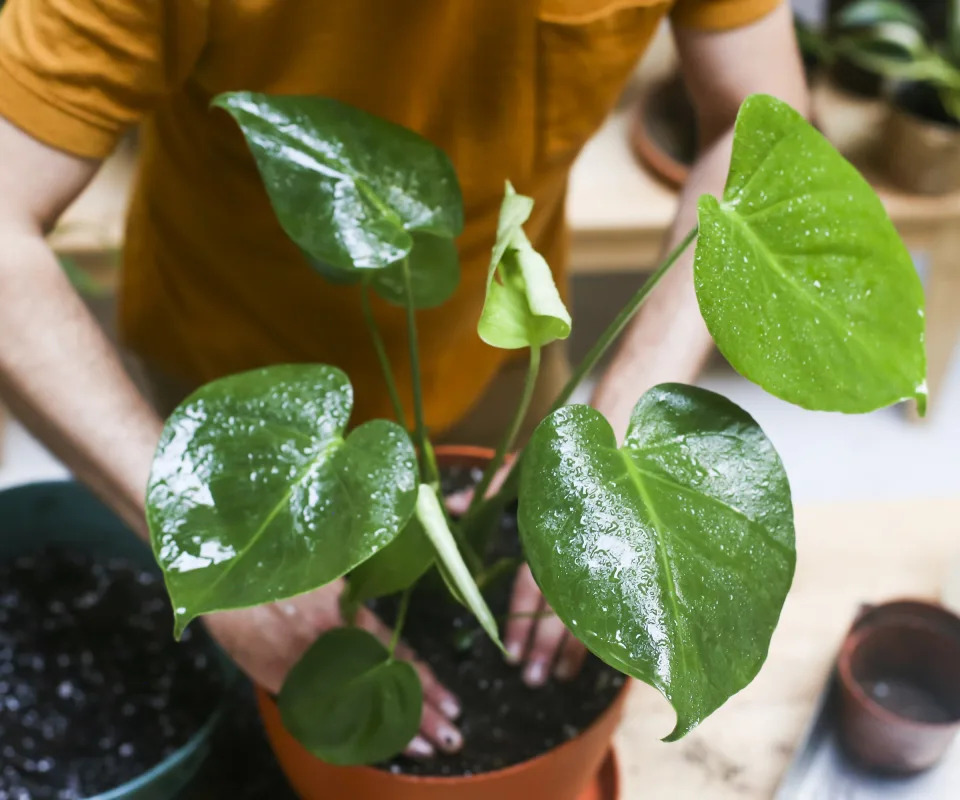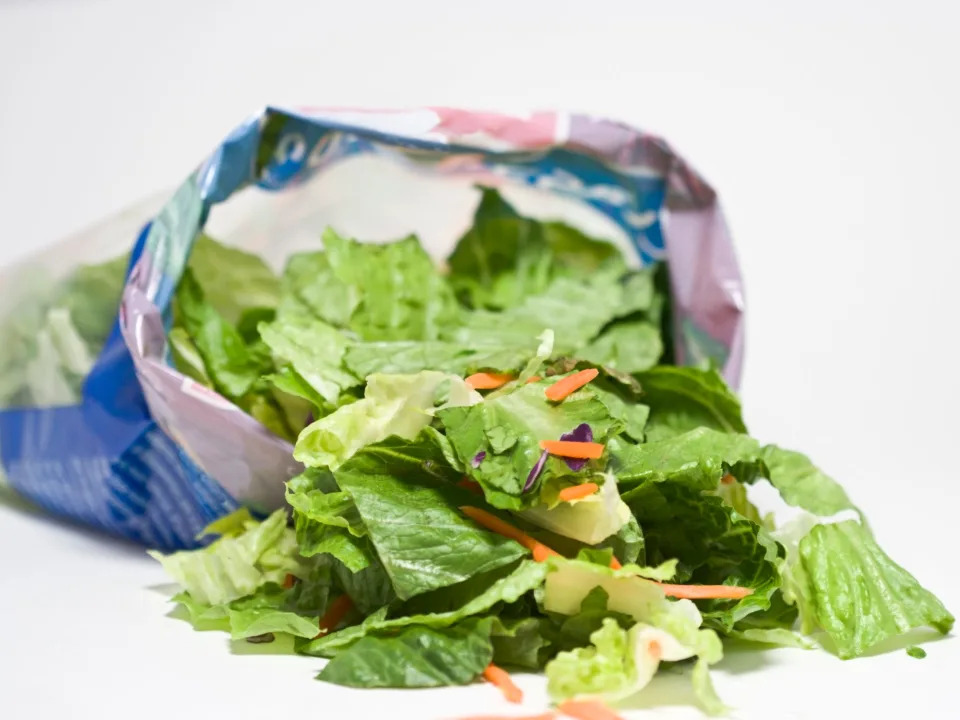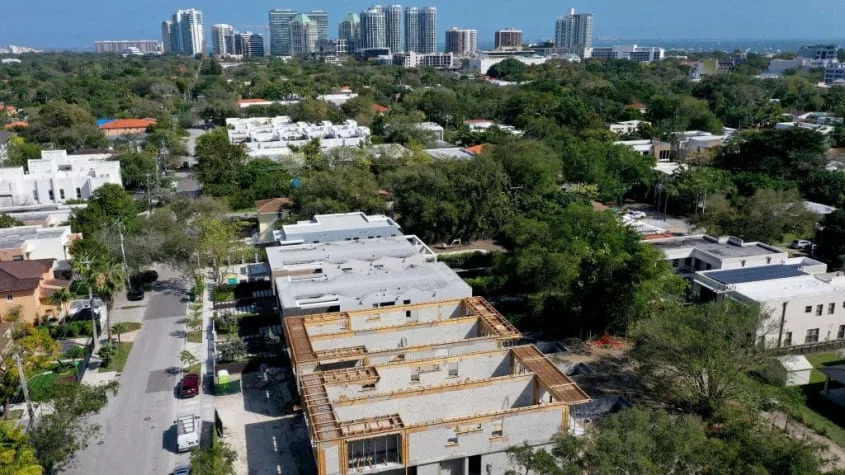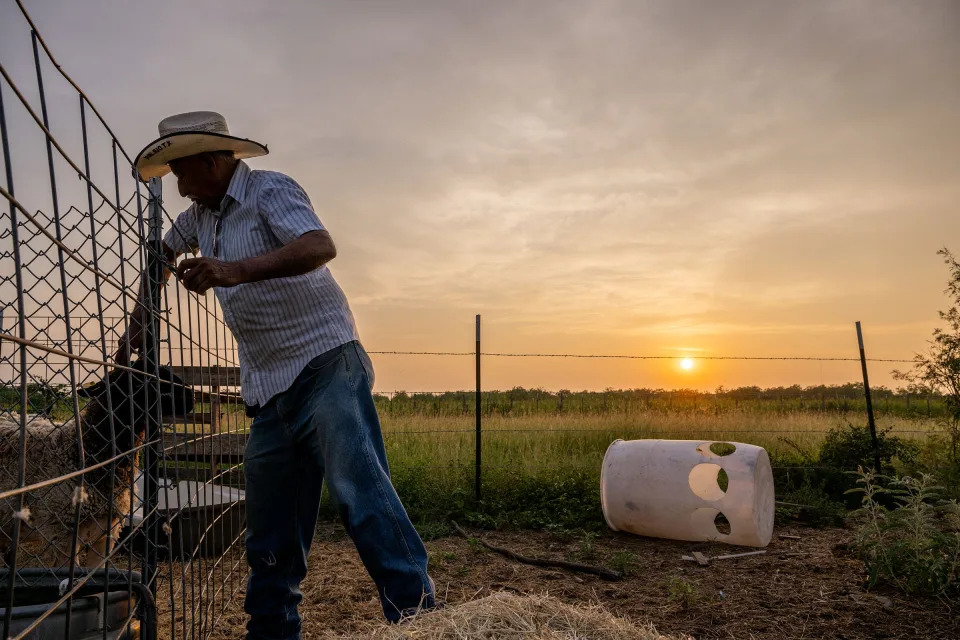Homes & Gardens
How do I fix an overwatered plant? The warning signs – and ways to combat excessive moisture

Overwatering plants is a common mistake to make and many people do not realize it can be as dangerous as underwatering. There is the potential for plants to be killed by overwatering as the roots can essentially be suffocated by too much moisture in the soil.
However, rest assured that there are tried-and-tested methods of fixing a plant that has been overwatered and getting it back to a healthy and thriving state again. The measures can be as simple as stopping watering until the soil dries out, to moving the plant or repotting it into a new soil mix.
Judging when to water plants is always tricky, especially so for a novice gardener, so it pays to know those classic signs of overwatering so you can spot them quickly and make any moves required to deal with that excess moisture in the soil.
What should I do if I overwater my plant?

Overwatering plants happens. It is often a case of over-enthusiasm and mis-judging how much moisture the plants need, though it can be a year-round issue and equally as problematic during the winter months as when watering plants in hot weather.
There are recommended tactics to avoid potential plant overwatering, such as watering plants from the bottom if they are in pots. You can also get aids, such as self-watering planters (our pick is below) or using DIY drip irrigation techniques to help control the watering of indoor plants or when container gardening.
However, there are tell-tale signs that any plant has been overwatered which are important to recognize. This includes yellowing or browning leaves, wilting, and also the soil can look green as a result of algae growth.
At the first sign of any of these, move quickly to see if overwatering could be the cause. While it is more common to overwater houseplants or those in containers, overwatering outdoor plants does also often occur and the signs to look out for will be the same.
The first move should be to check how wet the soil is around the base of the plants. When watering plants in containers, always use your fingers to see the moisture levels a few inches down in the pot. The soil may look dry on top, but still be very sodden below the surface and adding more moisture can easily lead to overwatering. An alternative to using your fingers is to get a soil moisture meter that can be inserted and give an instant reading with regards to water levels. Sonkir’s meter is by far Amazon’s best seller with over 30,000 positive reviews, and can also test soil pH.
If you fear overwatering to be the issue, then there are simple steps to take. Which one is the best step is likely to be dependent on how fast you spotted the signs of this garden watering mistake and how waterlogged the soil got.

ETGLCOZY 6/4.1/3.2 Inch Self Watering Planter Pots | available at Amazon
These set of five self-watering pots can allow up to 14 days of watering per fill and their clear view window allows you to monitor when it is time to fill the pot. They are ideal for indoor plants and can help prevent overwatering View Deal
1. Stop watering
It may seem obvious, but the main thing to remember is to stop giving an overwatered plant any more water. Continuing to add more water to an already overwatered plant can further exacerbate the issues and increase the chance of root rot.
It may take many days for the soil to dry out, but hold off from watering the plant while it dries out. If the problem has been identified quickly then merely letting the soil dry out and then adjusting your watering schedule to better suit the plant can often do the trick.

2. Re-pot the plant
To help the plant to recover from overwatering, it can be beneficial to re-pot it and improve the soil type in which it is living. Depending on how sodden the soil is, it might be possible to lift the plant out of the pot and allow the soil to dry in the air for a few hours. If the soil is so wet this seems unlikely, then it would be best to re-pot it completely into a better soil mix.
How to repot an overwatered plant in 5 simple steps:
- Remove the plant from the pot and try to remove as much of the wet soil as you can.
- Inspect the roots and cut off any rotting sections, they will look brown and potentially have a decaying odor.
- Pick a pot and make sure there are holes in the bottom for drainage. You can reuse the same pot, but it is best to wash it out beforehand.
- Repot the plant in a mix of free-draining compost, for example the Premium Organic Potting Mix from Burpee, with some perlite or grit added in for extra drainage. Do not reuse potting soil, or use garden soil in pots as it holds too much moisture.
- Place the pot in a shady spot and refrain from watering until the soil mix feels dry.

3. Move the pot
While the instinct might be to move the plant to the sunniest spot possible to help dry out the soil, this can actually do the plant further harm. It is far better to move the plant into a shaded spot to allow it to dry out.
A plant that has been overwatered will struggle to move water to its upper leaves, which can leave the upper levels of the plant at risk of drying out due to evaporation in full sun. This can further stress the plant, it is better to move the plant to a shady spot and remove any flowers or fruits that are towards the top. Removing theses helps the plant focus its energy into recovery and surviving.

4. Increase air flow
Increasing the air flow can help to dry a plant out. This can be particularly beneficial if you can lift the plant out of the pot and air dry the soil around the root ball. Air flow can help to dry out soil that is holding too much moisture, especially if they are in porous terracotta pots, and it can dry soil throughout the whole container. This can be achieved by placing a fan nearby.
If you can lift the root ball, lay it on a rack and get some air movement around it to help reduce some of that excess moisture. Once dried, the root ball can go back into the pot again.
FAQs
How long does it take for a plant to recover from overwatering?
The time it takes for a plant to recover from overwatering will depend on certain factors, including how sodden the soil is, the pot size, and temperature. It is a case of playing the waiting game and monitoring how long it takes for the soil to dry out completely before starting to water again. It can take between one and two weeks for a plant to dry out and start the recovery process from being overwatered.
What are signs of root rot?
The tricky thing with root rot is that, while there can be signs of the issue showing above the ground, you cannot be sure until you lift the plant. By this time there could be a lot of damage done to the plant’s overall health. The signs to look for include yellowing leaves, wilting, overall slow growth of plants, and also a rotting smell from the soil. Roots affected by rot will be brown or black in color, potentially slimey, and smelling of decay. There is no treatment for root rot, you can trim off any affected sections if you catch it in time and hope there are enough healthy roots remaining to maintain the plant.
Should I re-pot after overwatering?
There are many scenarios where it is helpful to re-pot a plant after overwatering. This is especially the case where the plant is living in a pot that does not have holes in the bottom for drainage. If there is nowhere for the water to go, the bottom of the pot can fill with moisture and start to suffocate the roots. If the soil is very sodden, or the pot does not have holes for excess water to escape through, then it is important to repot the plant.
Should I water an overwatered plant?
No, you should not water an overwatered plant. Continuing to add more moisture further increases the risk of root rot and the eventual demise of your plant. Stop watering and carefully monitor the plant until the soil dries out. Check the moisture levels regularly using your fingers to see the level a few inches into the soil. Only when the soil becomes dry to the touch should you start adding water and alter the watering schedule to prevent overwatering again.
Overwatering can often be a problem with container plants and houseplants, though it does not need to be the end of the road for any affected plant. Always get to know your plants, learn what watering they need to be at their best. and tailor any schedule to them. Never treat all plants the same when it comes to watering, as that can spell trouble. And monitor them closely, the sooner you see any troublesome signs the quicker you can act and the more likely it is the plant can pull through fine.











